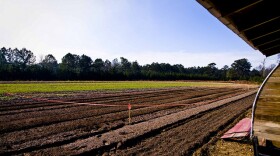Residents of Toledo and northwest Ohio got the go-ahead to resume drinking city water yesterday. Since Saturday, more than 400,000 residents of the area had been warned not to consume or use the water after health officials determined unsafe levels of microcystin. The potentially deadly bacteria, which was likely created by an algae bloom in Maumee Bay on the west end of Lake Erie, can cause serious liver and nerve damage.Scientists say the algae blooms, which have become more common in Lake Erie and elsewhere, are mainly triggered by leaking septic systems and when phosphorous used by farmers and homeowners runs off into lakes. Current State talks with Karen Schaefer, an independent public radio journalist based in Ohio who has been covering algae blooms in Lake Erie for years.
This segment is supported by Michigan State University's Knight Center for Environmental Journalism. More news about the Great Lakes environment can be found at GreatLakesEcho.org and on Current State every Tuesday as part of our partnership.



